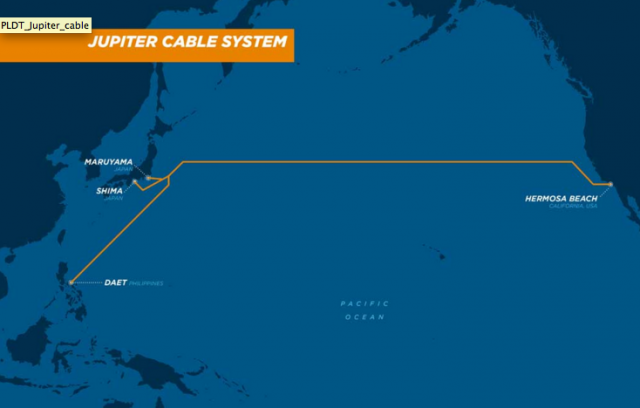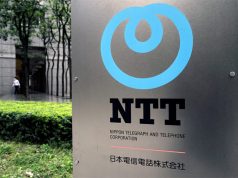MANILA – Telecommunications giant PLDT is investing nearly P7 billion in its new Trans-Pacific cable system which will reinforce the resiliency of its undersea fiber optic cables to the United States and Japan amid rising demand for digital services.
The fiber optic submarine cable system called Jupiter spans 14,000 kilometers and will directly link Maruyama and Shima in Japan and Los Angeles in the US to PLDT’s cable landing station in Daet, Camarines Norte. This is expected to meet the rising data traffic and complement cable systems through increased capacity and diversity in the Pacific Rim areas.
“We are investing in this new cable system in anticipation of the continued explosion of data traffic over the next few years, as households and businesses in the Philippines adopt more and more digital services,” PLDT Chairman- President and CEO Manuel V. Pangilinan said in a statement Monday.
“Along with our other technology initiatives, this new project will enable PLDT to gear up for the emerging ‘Gigabit Society’ where ultra-high-speed connectivity will support a wide range of bandwidth-heavy, low-latency digital applications and internet-of-things (IOT) services,” he added.
Jupiter will boost the PLDT Group’s capability to offer its customers bandwidth-heavy broadband applications that require international access like IP-based data, high definition video content as well as other multimedia and digital services.
“The JUPITER undersea cable project is specifically designed to give data service providers like PLDT the ability to quickly ramp up capacity when needed,” according to Katrina Luna-Abelarde, PLDT First Vice-President and Head of International and Carrier Business and President and CEO of PLDT Global Corp..
A consortium of global companies namely Amazon, Facebook, SoftBank, PCCW Global, NTT Communications has signed the agreement to build and operate the cable system.
For his part, PLDT VP and Head of International Network Gene Sanchez said strengthening undersea cable links to the US and Japan is a priority because the bulk of internet content and services being accessed by Filipinos are from servers in the US and a material portion of demand for content is served via Japan.
He also noted that the country has extensive economic ties with both the US and Japan which are among the world’s largest economies.
PLDT has been consistently investing heavily in international submarine cables to meet the growing connectivity needs of the country, including the requirements of the country’s business process outsourcing (BPO) industry.
In 2014, PLDT partnered with Hong Kong-based PCCW Global to acquire capacity in the Asia-Africa-Europe 1 (AAE-1) Cable System, a 25,000-kilometer undersea cable network system that connects Asia, the Middle East, East Africa, and Europe.
The company, together with its partners, completed the construction of the Asia Submarine-Cable Express (ASE), the largest-capacity international submarine cable system in the Philippines with a landing station located in Daet, Camarines Norte.
PLDT has also landed other international cable systems in the Philippines, such as the Asia Pacific Cable Network 2 (APCN2) and the Southeast Asia-Middle East-West Europe 3 (SEA-ME-WE3), which both land in Nasugbu, Batangas, and the Asia-America Gateway (AAG), in Bauang, La Union.










